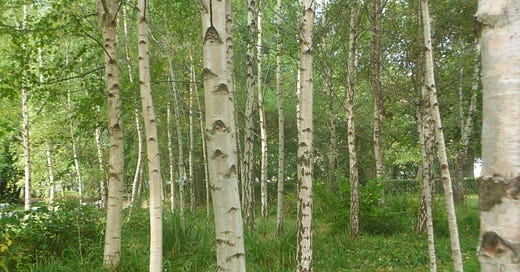A close friend of mine died recently, she was only 63, and although she had been ill for a couple of years, it was a shock for everyone.
So this got me thinking about green funerals. Is there an environmentally friendly way to deal with the end of life?
More and more people are becoming concerned about the carbon footprint of their death. So here are some thoughts about making your funeral greener.
Cremation or Burial?
These days in the UK, more people choose to be cremated rather than buried. However, which is the more eco-friendly option? Cremation reportedly requires as much fuel as a 500-mile car journey. Also, materials, such as mercury in tooth fillings present in many of our bodies further increase the impact a cremation will have on the environment (though in some places metals are removed from the body before cremation). You also need to be careful about where the ashes are scattered, basically don’t scatter them near rivers or other water bodies where people bathe or fish.
That doesn’t mean burials don’t have an environmental impact. Toxins in embalming materials can pose a serious risk to water supplies if the deceased is not buried in a suitable site. Many coffins are also far from biodegradable. And burial grounds take up a lot of space that could be used for other things.
Choose a Natural Burial Ground
Natural burial grounds may be set in meadows or woodland areas and aim to preserve the natural beauty of the site and encourage native wildlife. Most natural burial sites aim to keep the site as natural as possible, with graves marked by natural memorials such as trees. Some allow memorials made from natural materials, such as a wooden cross, to be erected. By using biodegradable coffins, or simple shrouds, and prohibiting embalming, a natural burial will minimise the negative impact on the environment. Some woodland burial sites are part of larger cemeteries, such as that below, which is part of Corstorphine Hill Cemetery in Edinburgh.
Since the UK's first natural burial site was opened in Carlisle Cemetery in 1993, the number has grown to around 260 green burial sites today across the country. Here is a list of woodland burial grounds in Scotland.
Even when not managed as woodland burial sites, many cemeteries are valuable wildlife havens.
Choose an Eco-Coffin or a Shroud
Eco-coffins are biodegradable and may be made from a variety of materials from bamboo or banana leaf to woven willow or wool. They are often more expensive than the basic coffin offered by most funeral directors. A shroud is also biodegradeable, and can be made from cotton, linen, silk, muslin or hemp.
Eco-Coffins offer a wide range of environmentally friendly coffins. However, many good funeral directors these days have an eco-friendly option in their coffin catalogue.
Or you may wish to choose a Tree-Pod Burial! The body is wrapped in natural fibre cloth, then stored within an eco-friendly, egg-shaped pod. The pod is then interred in the ground and a tree planted directly above it. The body releases nutrients and microbes as it decays, and those feed the tree above it.
Eco-friendly ideas for Funerals
Think about the environmental impact of every aspect of the funeral. Here are just some ideas: use a horse drawn hearse, encourage people to car share on the journey to the funeral venue, have vegetarian food at the wake, ask for charitable donations instead of floral offerings and avoid balloon releases.
It's a good idea to let your loved ones know that you want an eco-friendly funeral, so that they are prepared in advance.
Resources
The Natural Death Centre has a wealth of information about natural burials and eco-friendly funeral options.
Your Complete Guide to Eco-friendly Funerals from Dignity Funeral Directors.
I’ve Been Published!
I’m delighted to have two poems included in the latest issue of Shot Glass Journal from Muse Pie Press.





These are very sustainable ideas, creating a full circle of life! Are you familiar w the name Susanne Wiigh-Masak? She is from Sweden. Her design is to freeze-dry the dead body, then crush it and the the nutrients from the body provides sustenance to trees and plants. This is similar to what you talk about w a biodegradable bag/ pouch. My understanding is that the technology is not certified yet in Sweden.
2&1/2 years ago, my non-embalmed husband was buried in a bio-degradable shroud within 48 hours of his death in a (new) part of a cemetery designated for green burials. Native (wild) plants grow there and there are no individual headstones just one large stone with names and dates for each area. I still contribute to climate change because I drive a gas-fuelled car to visit, but I don’t go often. Ontario, Canada.